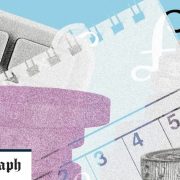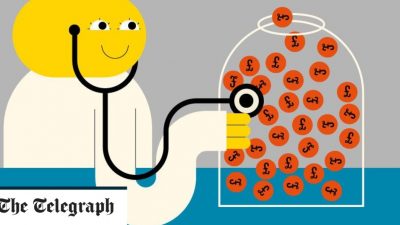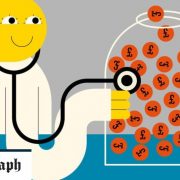Hard-pressed savers have been left with few options after one of the most attractive accounts was withdrawn, sparking fears that other providers could also axe popular savings accounts.
Marcus, the consumer banking brand of Goldman Sachs, has pulled its flagship easy-access account from sale, ending one of the biggest success stories from the savings market in recent years.
The Government-backed National Savings & Investments now offers the most attractive account in the market but analysts expect it will come under renewed pressure to drop rates in line with market conditions.
Marcus launched with great fanfare in September 2018 and marked Goldman Sachs’ first foray into consumer banking in Britain.
Named after the bank’s founder Marcus Goldman, it followed a similarly successful launch in America and was intended to be an easy way for the investment banking giant to generate cheap cash.
The premise was simple: one easy-access saver with an interest rate that would be among the best paying accounts. There would be no branches, with accounts opened and managed online to keep costs low.
This was a recipe for success. Within 10 days of launch, 50,000 people had opened an account and this number has risen rapidly since. Today it has more than 500,000 customers in Britain and total deposits have reached £21bn.
However, this has brought Marcus perilously close to breaching the £25bn deposit limit for banks. Providers who hold more than this sum must ensure their consumer deposits are “ring-fenced” from riskier activities such as investment banking.
Marcus has said it wants to return to the market in the coming months, but the ring-fencing rules may limit their ambition. Sources told The Telegraph last year that once British deposits near £25bn Goldman is likely to focus its expansion effort in Germany instead.
Other investment banks with similar ambitions may be dissuaded from entering the British market, fearing they will be caught out by the same financial rules.
While Goldman is trying to avoid ring-fencing, some banking experts claim the rule has helped the likes of British banking giants Barclays, HSBC, RBS and Lloyds maintain their current savings customers and have more money to lend at more competitive rates.
The outlook for the savings market was bleak before the Bank of England’s two emergency interest rate cuts in March and market conditions have only worsened since.
Moneyfacts, a financial analyst, found that the average easy-access savings account now pays 0.28pc interest. Eleanor Williams, of Moneyfacts, said this was a “historic low” for savers. As recently as March 1, easy-access accounts offered an average rate of 0.57pc.
Rather than battling to be top of the best-buy savings lists, banks are now trying to avoid being flooded with new money, given demand for mortgages has dropped considerably in recent months.
Sarah Coles of Hargreaves Lansdown, a fund shop, said: “The most competitive account attracts too much money, so the bank cuts back. This puts a new account in the frame, which attracts more money and then makes a cut, and so it continues.”
The top account is now offered by NS&I, paying 1.16pc in interest. The Government-backed institution is normally required to set its rates at a competitive level while also ensuring it does not trump commercial providers.
However, bosses at NS&I have eased these rules to ensure savers are supported during the coronavirus outbreak. It reversed a planned interest rate cut in April which has caused its Income Bonds to be catapulted to the top of the best-buy lists. Its nearest rival, RCI Bank UK, is some way behind the market leader, offering 1.05pc.
Marcus still offers a one-year bond paying 1pc interest while existing customers are able to deposit further funds into their easy-access account, which also has an interest rate of 1.05pc.
None of these accounts beats the rate of inflation, meaning that the value of cash held in these accounts is being slowly eaten away over time. As for the future, analysts say that NS&I could soon come under pressure to follow the market and cut its rates, causing further pain for savers.
Mrs Coles said: “There are no guarantees NS&I will be able to stand firm forever.
“It will also be under pressure to offer value for money for taxpayers – because the Government can get hold of cash far more cheaply at the moment by borrowing.”
























Comments